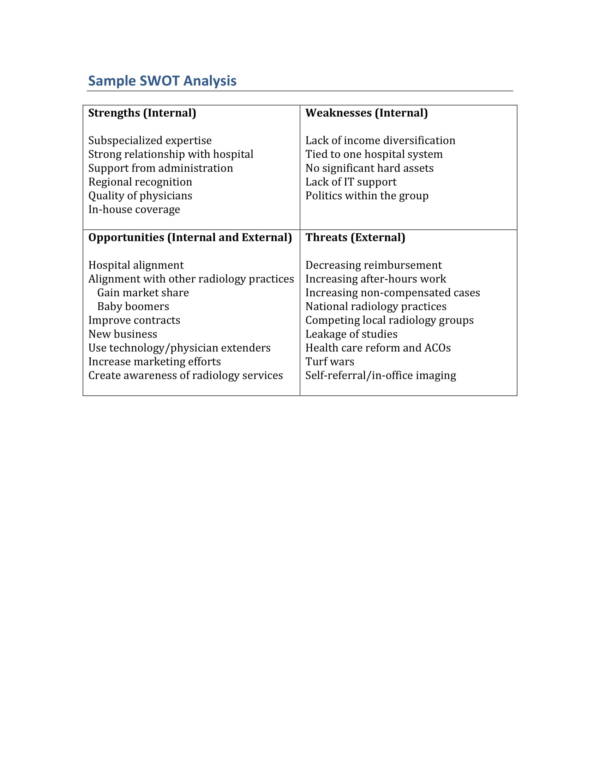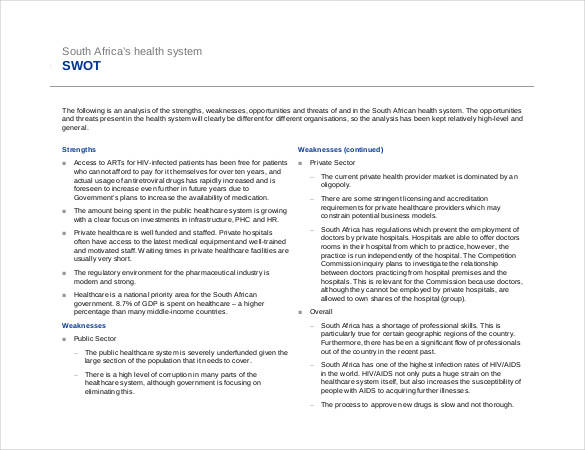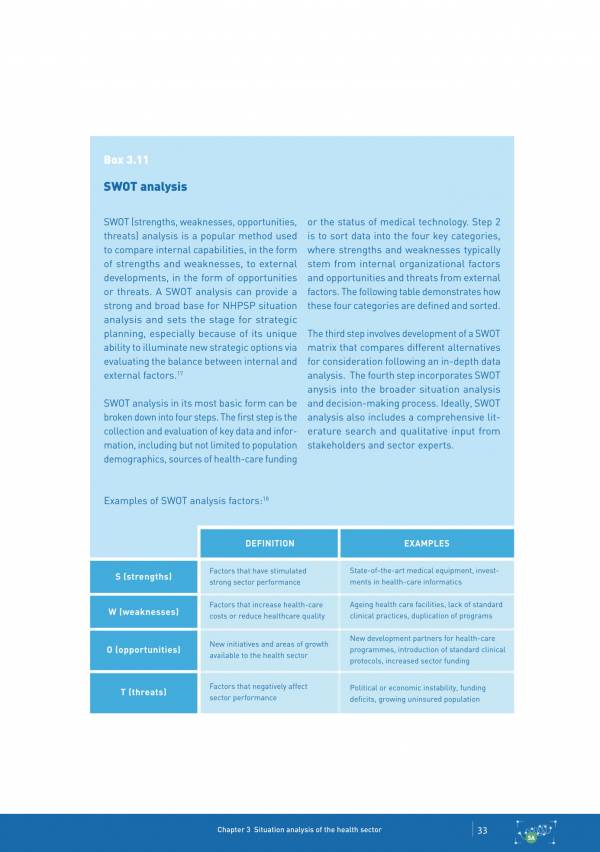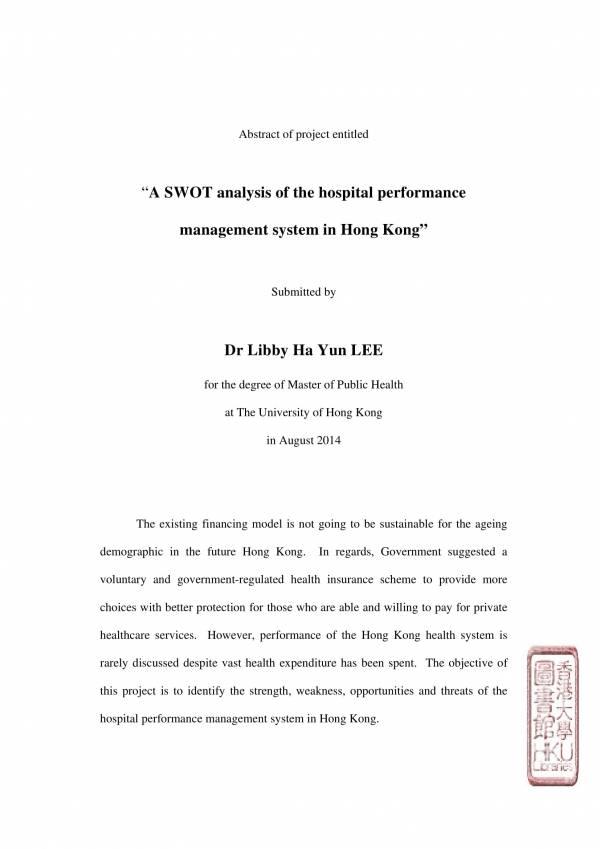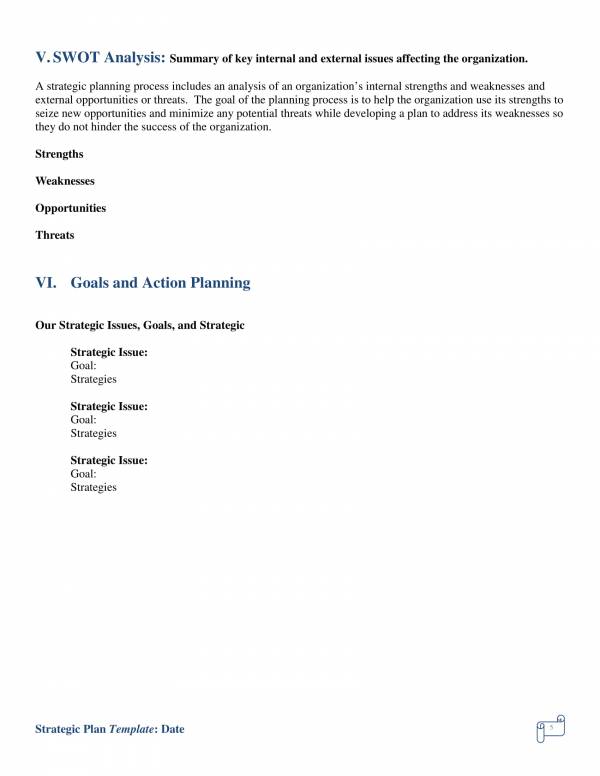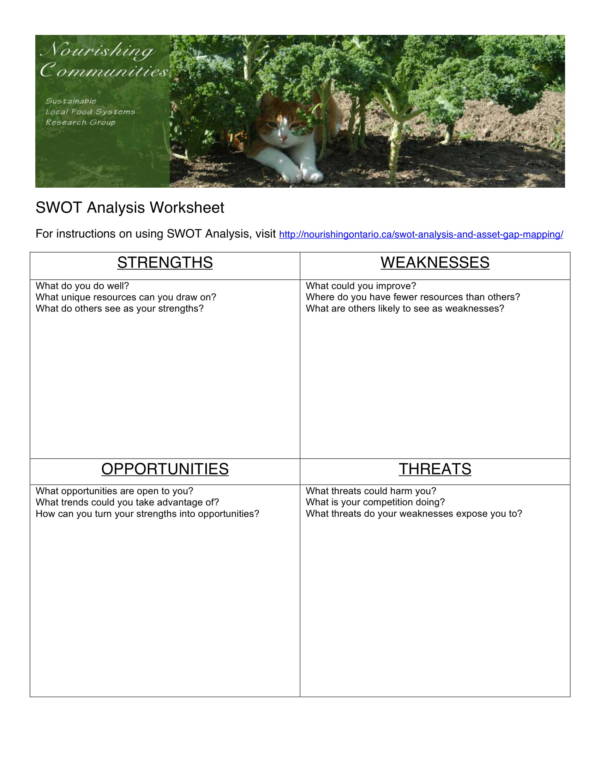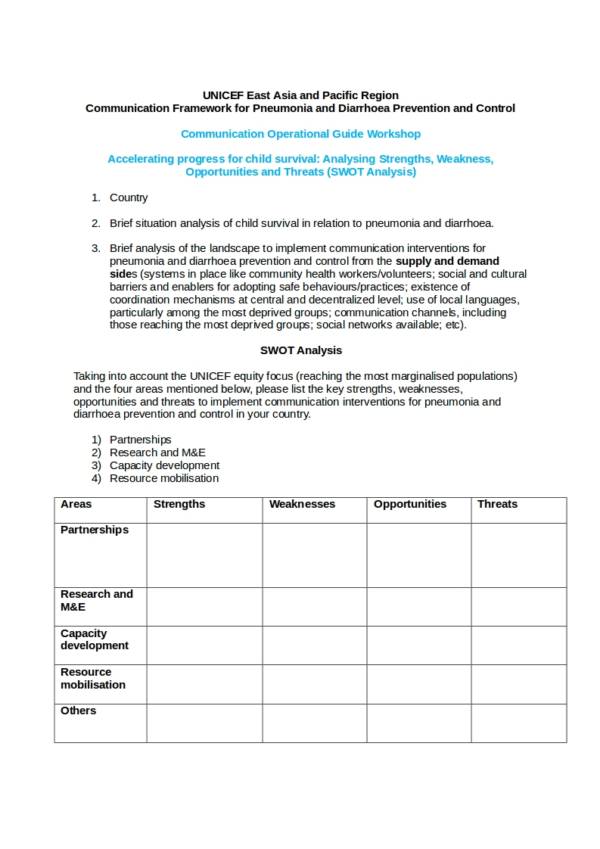SWOT analysis can be done in either on an individual or an organization. The aim of conducting a SWOT analysis is to help individuals or organizations identify their strengths, weakness, opportunities and threats and be able to analyze and understand them for their own benefit. Data gathered in a SWOT analysis is essential for planning and determining the things that needs to be undertaken for further improvement.
Great results and useful data or information are produced with a thoroughly planned and conducted SWOT analysis. One of the areas where a SWOT analysis is used on is in health care. Health care involves a lot of different things that are related to the health and well-being of an individual, family or community. In this article, our topic would be all about SWOT analysis in health care and SWOT analysis samples and templates are provided as your reference. You can check them out below.
Sample Healthcare SWOT Analysis Template
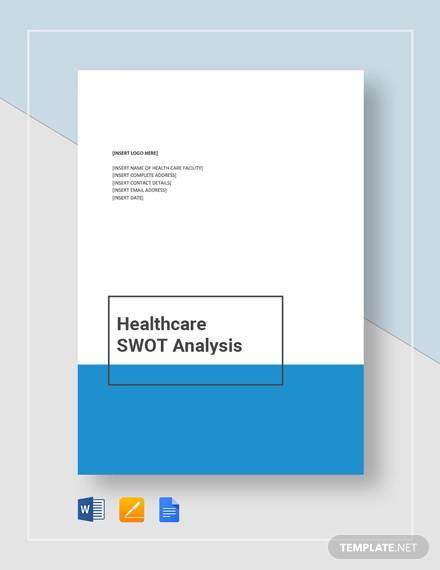
Editable Hospital SWOT Analysis
Home Health Care SWOT Analysis
Sample SWOT Analysis Template
South SWOT Analysis for Africa’s Health System
WHO Sample SWOT Analysis
Hospital Sample SWOT Analysis
What Is a SWOT Analysis in Health Care?
There is a need for health care processes or procedures to continue making improvements as well as evolve together with technological advancement. This is done in order to provide the best care for every patient and save lives. A SWOT analysis is one of the ways on how it can be done. A SWOT analysis is done to examine and analyze the strengths and weaknesses of an organization as well as help them find the opportunities where they could use to grow or improve and the threats that could hinder all of their efforts for improvement and survival.
A SWOT analysis is a systematic from of evaluation that is commonly done in other industries. The use of a SWOT analysis has just been increasing in health care, but because it has been proven to be effective it has benefited the health care setting using it. The following is an example on what factors can be become part of the a SWOT analysis in health care.
Strengths
Strengths mostly refer to the things that one is good at and there are many factors that contribute to the strengths of a particular health care institution. For example, the strengths of a hospital could be because they have up-to-date and state-of-the-art-equipment that can guarantee to save lives. Having the best doctors, specialists, the best nurses and a dynamic staff also contributes to the strengths of a hospital.
Weaknesses
These are the factors that gives a health care institution a bad name or a bad reputation, which often leads to the increase in the cost of health care but provides poor quality of care. These factors can be due to lack of proper management and training, aging or old health care facilities, lack of financial resources, limited collaboration with other health care agencies and so on. It is the exact opposite of what is known as the strengths of health care.
Opportunities
Knowing about the opportunities that has opened its doors to you is a great advantage as you can make use of it while it is still available. Opportunities are significant in health care setting as they are viewed as initiatives that are available to health care organizations. It could be an opportunity to partner or collaborate with government agencies or communities, make improvements in health care policy, a chance at doing research on a articular subject, etc. These opportunities allow health care organizations to build a good reputation to their clients.
Threats
These are the factors that threaten the survival of the health care organization, puts the organization at risk and greatly affects the performance of the health care institution in a negative way. It could be lack of funding for health care, political instability, high demand in new and advanced health care procedures and technology, pressure in reducing health care cost, a growing population that is mostly uninsured and many more.
The coverage of a SWOT analysis in health care vary depending on which part of health care is being focused on. Health care is a very broad topic and using a single guideline as basis for everything will surely not result in desirable outcomes. The same thing is true with SWOT analysis that are done in other industries, like restaurant SWOT analysis and business SWOT analysis.
What Are the Advantages and Disadvantages of a SWOT Analysis?
SWOT analysis offers several advantages and disadvantages to whoever wishes to have it conducted regardless if it it in business or other industries. We have gathered and made a list of a SWOT analysis’ advantages and disadvantages below.
Advantages:
- A SWOT analysis helps in the identification of internal and external factors that are either favorable or unfavorable to an organization. It also helps determine if the said factors are in line or agree with the specific goals and objectives that an organization has set.
- It helps an organization become aware of their strengths, weaknesses, opportunities and threats that they are facing. And the process remains the same regardless of what it is being used on.
- Different types of data needs to be integrated in a SWOT analysis so quantitative data is combined with qualitative data.
- A SWOT analysis is a simple process that can be performed or conducted by anyone who knows the business that is to be evaluated.
- Training is not required in order for an individual to conduct a SWOT analysis because it does not involve too much technicality that a knowledgeable staff could not handle. This helps the business save cost from providing training.
Disadvantages:
- A SWOT analysis is subjective information. In other words, the data being provided is only based on what the evaluate has seen and what the evaluator wants to include. It may not entirely be reliable and may not be all the time the same with what is actually happening in the business.
- It is difficult to determine the impact of each factor to the organization as there is actually no means of weighing them.
- It cannot help identify the significance of certain factors as well as prioritize the factors that should be given attention first.
Those are the advantages and disadvantages of of a SWOT analysis. Other related topics that you may be interested in are what is SWOT analysis, what is a behavior analysis, and what is a business analysis.
Steps to Follow for SWOT Analysis in Healthcare
The following are the steps that you can follow and use as guidelines for conducting a SWOT analysis in health care.
Step #1:
Just like any other processes that you do, the very first step to do a SWOT analysis in health care is to gather and assess necessary and relevant data. The type of data gathered would vary depending on what the SWOT analysis is for or the focus of the analysis to be conducted. Some examples include the health status of an individual or community, the available medical technology and other resources, and capabilities of the health care organization and many more.
Step #2:
The second step makes use of the SWOT acronym. Here, the gathered data is further categorized as a strength, weakness, opportunities and threats. Strengths and weaknesses are identified as internal factors, and opportunities and threats are external factors that still causes and impact to the health care organization.
Step #3:
This is the step where the categorized data is further analyzed and becomes the basis of options that the health organization would have to take into consideration.
Step #4:
The fourth step would be incorporating the analyzed information into the decision-making process of the organization. It will help them choose the appropriate and best option and what actions to take that will be best or that will work best with the strategic plan that the organization has laid out as a whole.
There you have four easy and simple steps to follow in a SWOT analysis for health care. If you wish to learn, we definitely offer other related topics that you may be interested in. To name a few are industry analysis samples and Stakeholder Analysis.
Department of Health Strategic Plan Template With SWOT Analysis
Army Healthcare SWOT Analysis
Healthcare Partnership SWOT Analysis
Health Care SWOT Analysis Template With Instructions
UNICEF SWOT Analysis Template
Rules to Keep in Mind While Conducting SWOT Analysis in Healthcare
There are certain things that you need to keep in mind in order for you to conduct a proper health care SWOT analysis and they are as follows.
- Be realistic and unbiased. Reliable and unbiased data is very important when it comes to doing a SWOT analysis as it can greatly affect the result of the analysis. It can make or break the entire process.
- Always be rational. When planning for the things that you must do, always see to it that your plan is able to compete to that of your competitors. This way you will know if you have made a good plan or if you have made a bad one.
- Avoid being too complex. Over analyzing can lead to serious problems and may cause overlooking of the things that are really important. When doing your analysis. It is okay to keep things short and simple to avoid confusion.
- Be flexible and open to change. Problems may arise at different time during your analysis so you must always be ready for whatever change you need to do in order to address those problems and ensure that your work is updated.
There are just four rules and they are not that hard to remember. If you take note of these rules then you are sure to create a proper health care analysis. Other related articles that you may find useful are about financial analysis and marketing analysis.
Related Posts
FREE 10+ Fishbone Root Cause Analysis Samples in PDF
FREE 11+ Cost Volume Profit Analysis Samples & Templates in PDF | MS Word
FREE 6+ Corporate Portfolio Analysis Samples in PDF
FREE 10+ Fault Tree Analysis Samples in PDF
FREE 10+ Comp Analysis Samples in PDF
FREE 10+ Fishbone Analysis Samples in PDF
FREE 10+ Individual Swot Analysis Samples in PDF
FREE 10+ 5 Year Analysis Samples in PDF
FREE 10+ Benefit Costs Analysis Samples in PDF
FREE 10+ Job Hazard Analysis Samples in PDF
FREE 10+ Primary Source Analysis Samples in PDF
FREE 10+ Critical Path Analysis Samples in PDF
FREE 10+ Competition Analysis Samples in PDF
FREE 10+ Activity Hazard Analysis Samples in PDF
FREE 10+ Risk Benefit Analysis Samples in PDF



